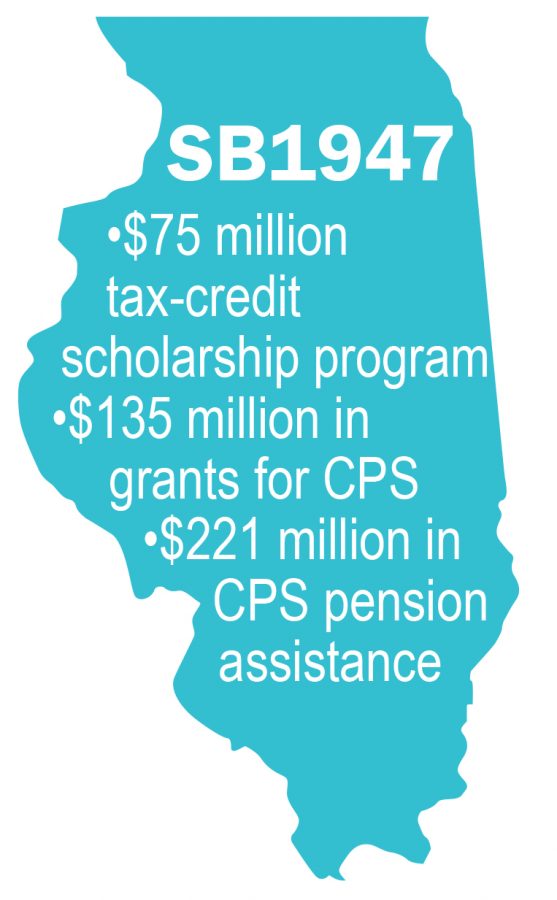School funding bill gives districts needed relief
September 5, 2017
Illinois public schools now have state funding after weeks of surviving without it.
After tense negotiations between Democrat and Republican legislators this summer, Gov. Bruce Rauner signed Senate Bill 1947 Aug. 31. The law’s evidence-based funding system will steer money to the state’s 852 school districts based on local property wealth and student-population needs.
The bill also includes a controversial $75 million tax-credit scholarship program for students looking to attend private schools instead of public schools and $221 million for Chicago Public Schools teacher pension assistance—a $209 million increase from last year—according to state legislative records.
Despite mixed reports from education experts, this is a historic step forward in fixing the state’s funding crisis, said Marie Ann Donovan, an associate professor of education at DePaul University. However, some schools would not have been able to stay open without securing state funding, she added.
“[In] some of these small, rural districts, the superintendents [have] been telling me, ‘I’ve got a week and a half,’” Donovan said. “Others were saying, ‘I have [funding] until Christmas.’”
William Sampson, chair of Public Policy at DePaul, called out the tax-credit scholarship program, criticizing the legislators’ support of private education over public education.
“I think it’s shameful [and] horrible,” Sampson said. “It’s [scholarship program] an indirect way of doing school vouchers.”
Although the bill was passed by the state legislature Aug. 10, Rauner delayed signing the bill, leaving an unpaid $540 million in state funding desperately needed by schools to run academic programs and sending districts across the state scrambling, said Abdon Pallasch, spokesman for Illinois Comptroller Susana Mendoza.
Despite Illinois passing its first budget in more than two years on July 6,aid could not be sent to schools. Democrats added a provision to the budget requiring a new school funding formula to pass before payments could be made.
Both general payments and those earmarked for particular purposes, such as transportation or special needs programs, were withheld by the state, leaving some schools without state aid this academic year, said Lauren Hummel, chief operating officer of Palatine Township school district, District 211.
However, District 211 is in a strong financial position and has not been greatly hurt by the funding dilemma, Hummel said, adding that, “Teachers and students have spent very little time worrying about school closing.”
At Elmhurst school district, District 205, students and faculty have been reporting to the school without a problem during the two weeks without the aid, said Superintendent Dave Moyer.
“For us, we always try—no matter what else is going on—to keep the focus on our learning priorities,” Moyer said.
Although both Palatine and Elmhurst school districts have enough funds to last all year, neither could risk getting involved in short-term borrowing if the legislation had not passed, according to Moyer and Hummel.
“I had student and full-time teachers calling me, emailing me and texting me, stopping by my office in tears,” Donovan said.
With no real way for teachers to prepare for a situation like this, administrators were doing anything they could to keep morale up, Donovan said.
Administrators began addressing students and parents directly in welcoming messages and assemblies and easing tension by visiting their local towns to keep the focus on learning, she added.
“Teachers are pros,” Donovan said. “We are just going on and we are ignoring the craziness outside.”








